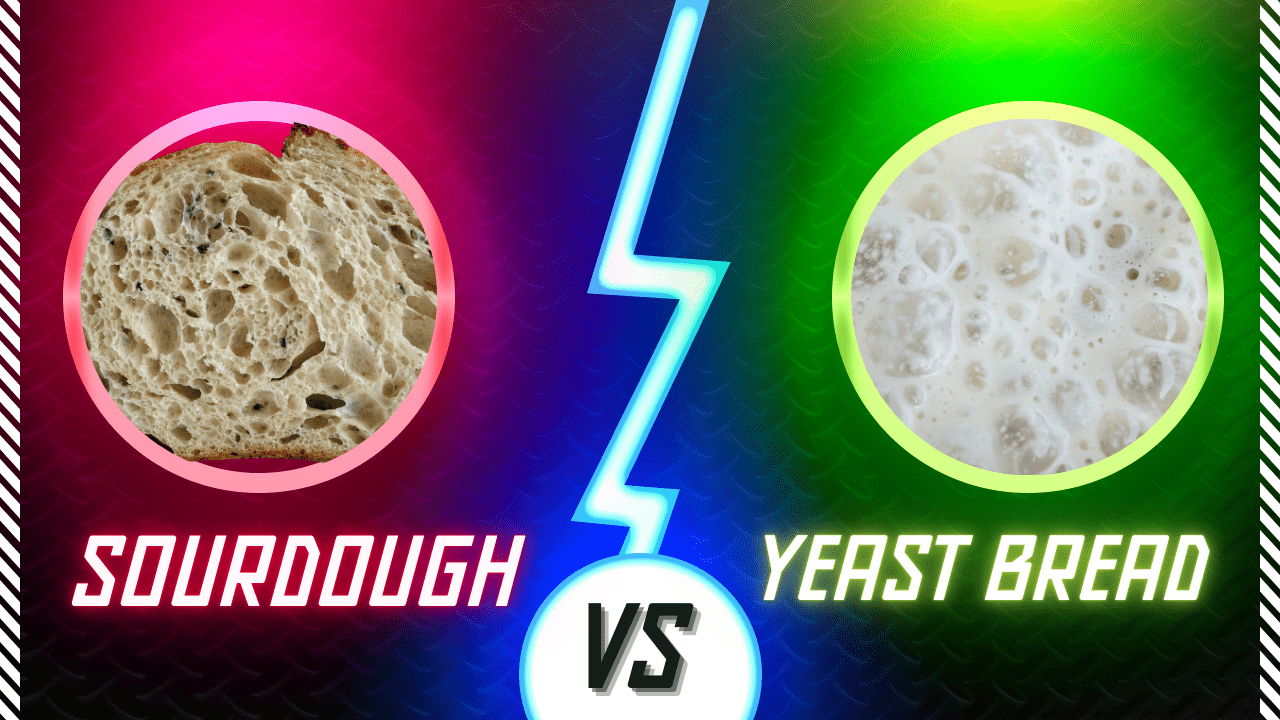Sourdough vs Yeast: Discover the Differences
Bread enthusiasts often find themselves torn between two popular types of bread: sourdough bread and yeast bread. While both are delicious, they have distinct characteristics that set them apart.
The main difference lies in the leavening agent used. Sourdough relies on a natural starter culture, whereas yeast bread uses commercial yeast for fermentation. This difference affects not only the taste but also the texture and nutritional content.
In this article, we will delve into the world of sourdough and yeast bread, exploring their differences and helping you decide which one suits your taste preferences.
Sourdough vs Yeast: Understanding the Fundamentals
The world of bread making is primarily dominated by two leavening agents: sourdough starters and commercial yeast. Understanding the fundamentals of these two agents is crucial for appreciating the differences in the bread-making process.
What is Sourdough Starter?
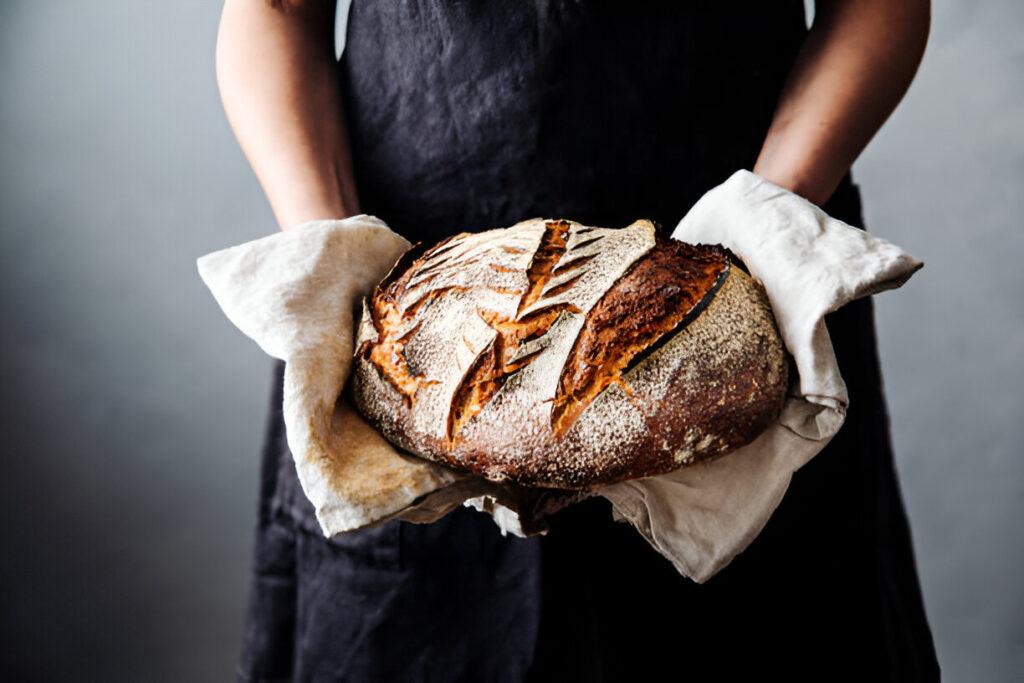
A sourdough starter is a naturally occurring mixture of wild yeast and bacteria that is used to leaven bread. It is created by allowing a mixture of flour and water to ferment, capturing the wild yeast and bacteria present in the environment. This starter is then used in place of commercial yeast to rise bread, imparting a unique flavor and texture.
Commercial Yeast Varieties
Commercial yeast, on the other hand, is a cultivated microorganism specifically designed for bread making. It is available in various forms, including active dry yeast, instant yeast, and fresh yeast. Each type has its own advantages and is suited for different bread-making techniques and recipes. Commercial yeast provides a consistent and predictable rise, making it a favorite among many bakers.
Historical Context and Development
The use of sourdough starters dates back thousands of years, with evidence of its use in ancient Egyptian baking. Commercial yeast, however, is a more recent development, with its introduction revolutionizing the baking industry by providing a more reliable and faster method of leavening bread. The historical development of these leavening agents has significantly influenced bread-making techniques and the characteristics of the final product.
By understanding the basics of sourdough starters and commercial yeast, bakers can better appreciate the differences between these two fundamental bread-making methods. This knowledge lays the groundwork for exploring the science, flavor profiles, and nutritional aspects of bread made with these leavening agents.
The Science Behind Fermentation
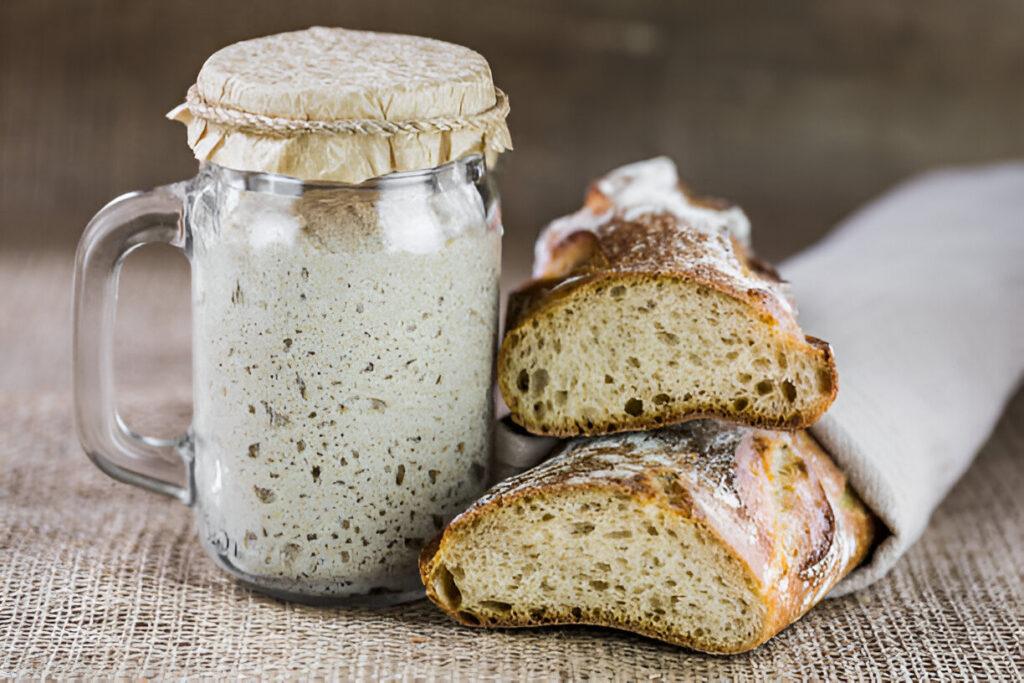
Fermentation, the process that gives bread its rise, flavor, and texture, is a fascinating blend of art and science. It’s a biochemical process that involves the action of microorganisms like yeast and bacteria, which break down the sugars in dough, producing carbon dioxide and other compounds that contribute to the bread’s characteristics.
Wild Yeast and Bacteria Interaction in Sourdough
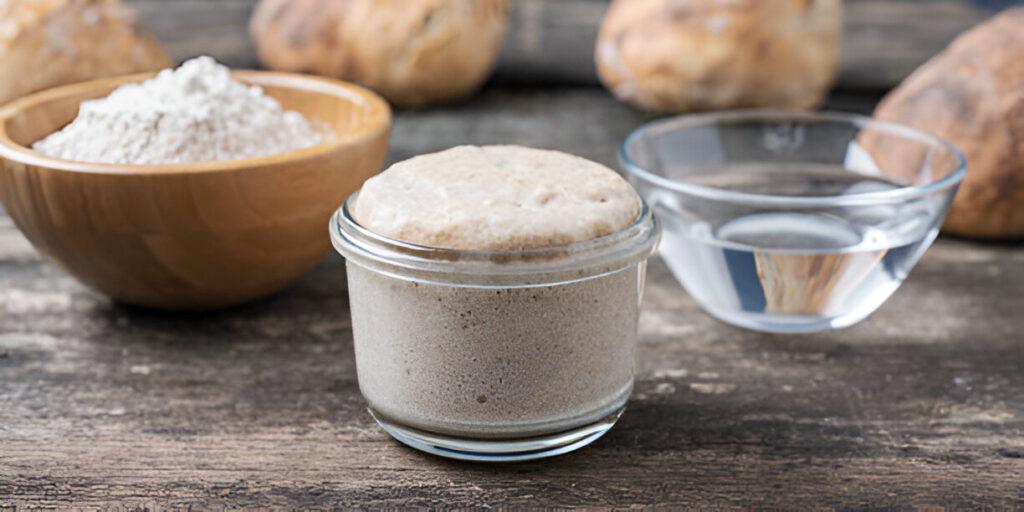
Sourdough’s unique flavor and properties are due to the interaction between wild yeast and bacteria in its starter culture. This symbiotic relationship enhances the dough’s fermentation, contributing to its rise and flavor profile. The lactic acid produced during this process gives sourdough its characteristic tanginess.
Commercial Yeast Fermentation Process
Commercial yeast, typically Saccharomyces cerevisiae, is a more straightforward fermentation agent. It ferments sugars rapidly, producing CO2 and causing the dough to rise. This process is faster and more predictable than sourdough fermentation, making it a favorite among many bakers.
Time and Temperature Factors
Both time and temperature play crucial roles in fermentation. A longer fermentation time can lead to a more complex flavor, while temperature affects the rate of fermentation. Managing these factors is key to achieving the desired bread characteristics, whether using sourdough or commercial yeast.
Flavor and Texture Differences
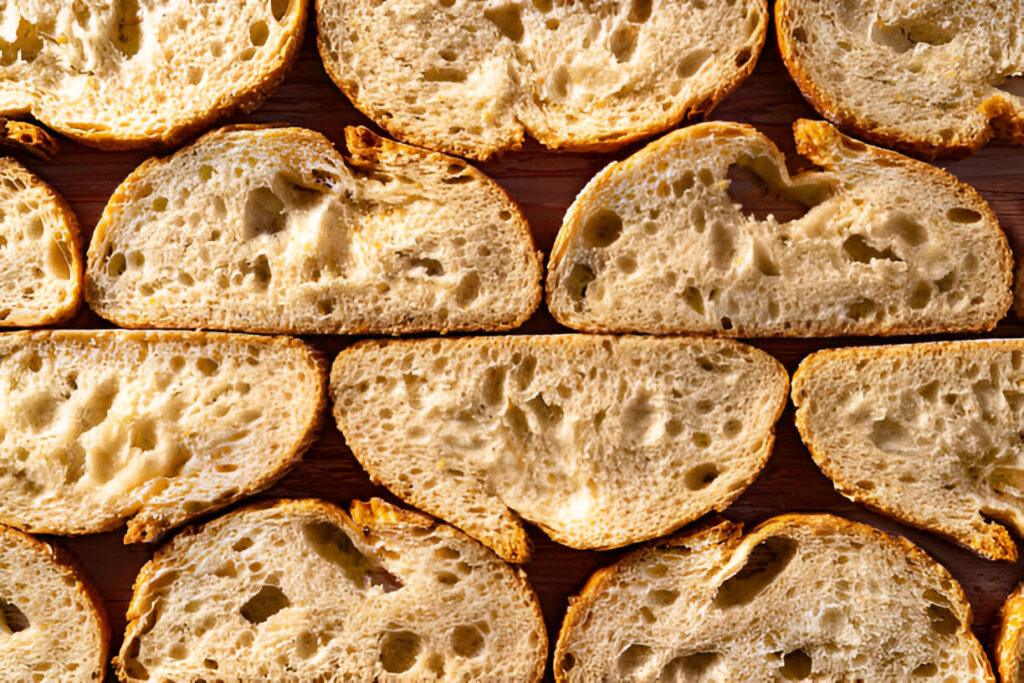
Sourdough and yeast breads have distinct differences in terms of flavor and texture, shaped by their respective leavening agents. Understanding these differences can help bakers choose the right method for their needs.
Complex Flavor Profile
Sourdough bread is renowned for its complex flavor profile, which develops through the slower fermentation process involving wild yeast and bacteria. This results in a richer, tangier taste that many bread enthusiasts appreciate.
Yeast Bread Characteristics
In contrast, yeast bread tends to have a milder flavor and a softer texture, thanks to the quicker action of commercial yeast. The faster fermentation process produces a bread that is often lighter and airier.
Crust, Crumb, and Keeping Quality
The crust and crumb of sourdough and yeast breads also differ significantly. Sourdough typically has a chewier crumb and a crustier exterior, while yeast bread can have a softer crumb and less crust. Additionally, sourdough’s longer fermentation time contributes to its better keeping quality, staying fresh for longer.
Health Benefits and Nutritional Considerations

Beyond taste, sourdough and yeast breads offer different nutritional benefits and considerations. The fermentation process in both types of bread significantly impacts their nutritional profiles.
Digestibility and Gluten Breakdown
Sourdough bread is often considered easier to digest due to its longer fermentation time, which breaks down some of the gluten. This makes it a potential option for those with mild gluten intolerance. In contrast, bread made with commercial yeast has a shorter fermentation time, potentially leaving more gluten intact.
Glycemic Index Comparison
The glycemic index (GI) of bread is a measure of how quickly it raises blood sugar levels. Sourdough bread generally has a lower GI compared to yeast bread because the lactic acid produced during its longer fermentation slows down the digestion of carbohydrates. This can be beneficial for managing blood sugar levels.
Prebiotic and Probiotic Properties
Sourdough’s unique fermentation process not only breaks down gluten but also creates beneficial prebiotic and probiotic properties. The lactic acid bacteria in sourdough can act as probiotics, supporting gut health. While yeast bread does not offer the same probiotic benefits, some commercial yeast breads are enriched with additional nutrients or fibers that can have prebiotic effects.
In conclusion, sourdough and yeast breads have distinct nutritional profiles. Sourdough’s longer fermentation time contributes to its potential health benefits, including improved digestibility and a lower glycemic index. Understanding these differences can help consumers make informed choices about their bread consumption.
Conclusion: Which Is Right for Your Baking Needs?
When deciding between sourdough and yeast for your baking needs, understanding their differences is key. Sourdough vs yeast is more than just a choice between two leavening agents; it’s about the unique characteristics each brings to your bread.
Baking with sourdough requires patience and a natural starter culture, resulting in a complex flavor profile and chewy texture. In contrast, commercial yeast provides a quicker, more predictable rise, ideal for those with time constraints.
A sourdough starter is not just a leavening agent; it’s a living, breathing ecosystem that contributes to the bread’s nutritional profile and digestibility. Whether you’re a seasoned baker or just starting out, experimenting with both methods can enhance your baking skills and broaden your appreciation for artisanal breads.
Ultimately, the choice between sourdough and yeast depends on your personal preferences, baking goals, and the type of bread you wish to create. By understanding the strengths of each, you can make informed decisions and enjoy the rewarding process of bread making.
FAQ
What is the main difference between sourdough and yeast bread?
The primary difference lies in the leavening agent used. Sourdough bread relies on a natural starter culture, whereas yeast bread uses commercial yeast for fermentation.
How do I maintain a sourdough starter?
To keep your sourdough starter healthy, regularly feed it with flour and water, and store it in a suitable environment. The frequency of feeding depends on factors like temperature and the starter’s activity level.
Can I substitute sourdough starter for commercial yeast in recipes?
While it’s possible to substitute, it’s not always straightforward. Sourdough starter and commercial yeast have different properties, so adjustments in recipe formulation, proofing times, and temperatures may be necessary.
Is sourdough bread healthier than yeast bread?
Sourdough bread has several potential health benefits, including improved digestibility, lower glycemic index, and the presence of prebiotic and probiotic properties due to the lactic acid bacteria present in the starter.
How long does it take to make sourdough bread?
The time required to make sourdough bread can vary significantly, depending on factors like the starter’s activity, dough temperature, and the specific recipe. Generally, it can take anywhere from 12 to 48 hours or more from mixing to baking.
Can I use sourdough starter to make other baked goods besides bread?
Yes, sourdough starter can be used in a variety of baked goods, such as pancakes, waffles, cakes, and cookies, adding a unique flavor and texture to these products.
What are the benefits of using a sourdough starter over commercial yeast?
Using a sourdough starter offers several benefits, including a more complex flavor profile, improved nutritional content, and potentially better digestibility. Additionally, maintaining a sourdough starter can be a rewarding and sustainable baking practice.
How does the fermentation process differ between sourdough and yeast bread?
Sourdough fermentation involves a slower, more complex process driven by wild yeast and lactic acid bacteria, whereas commercial yeast fermentation is faster and primarily driven by the yeast Saccharomyces cerevisiae.ed bread that keeps longer than store-bought alternatives.

Written by Samantha Greene, a gluten-free home cook with over 10 years of experience creating allergy-friendly recipes the whole family can enjoy.
